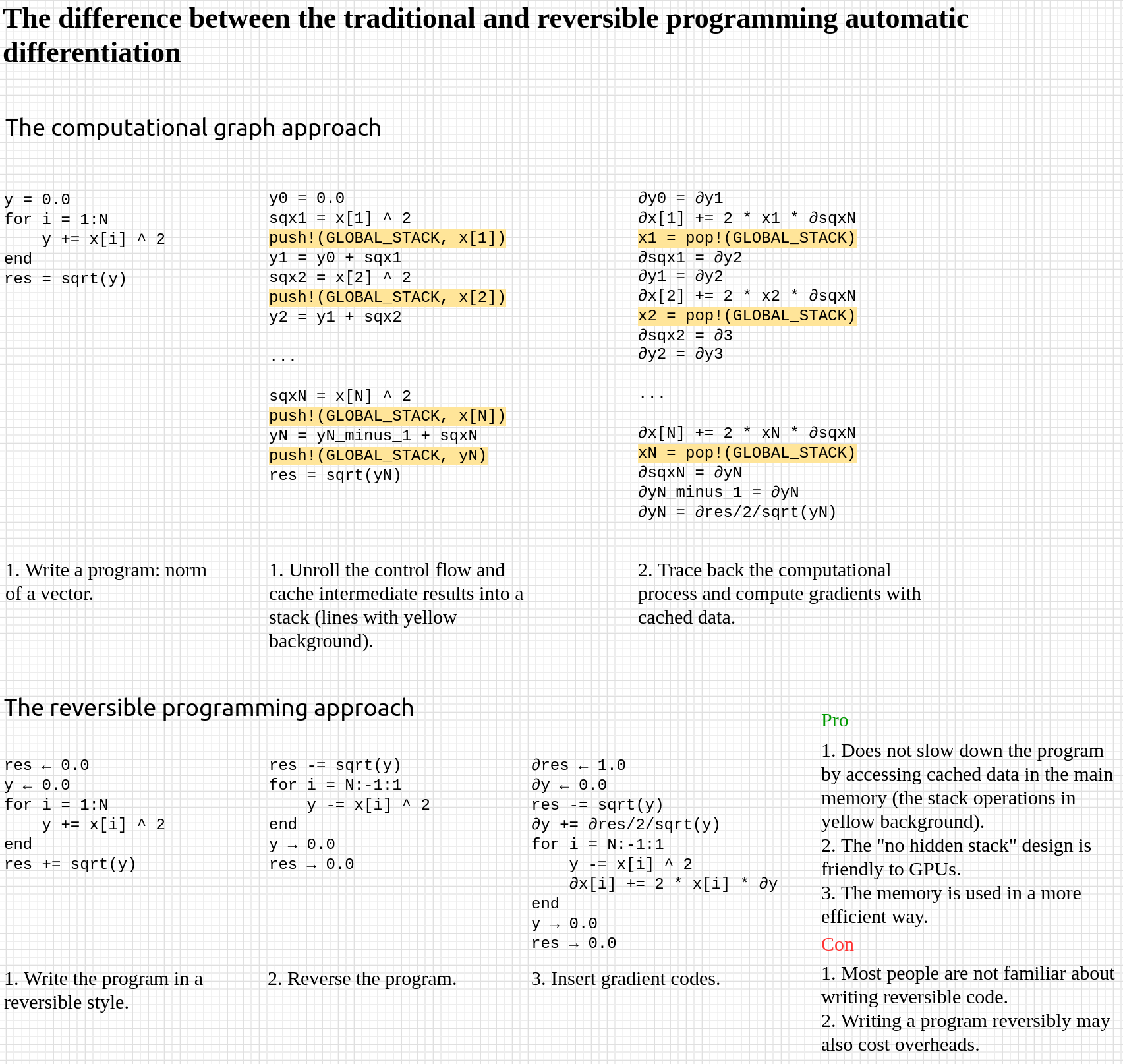NiLang.jl (逆lang), is a reversible domain-specific language (DSL) that allow a program to go back to the past.
- Requires Julia version >= 1.3,
- Now a function dataview is specified by
x |> bijection, e.g. the preivousgrad(x)now should be written asx |> gradin the reversible context. - Our paper uses version v0.6, which might be different from the master branch.
NiLang features:
- any program written in NiLang is differentiable,
- a reversible language with abstraction and arrays,
- complex values
- reversible logarithmic number system
The strangeness of reversible computing is mainly due to our lack of experience with it.—Henry Baker, 1992
pkg> add NiLang
julia> using NiLang
julia> @i function f(res, y, x)
for i=1:length(x)
y += x[i] ^ 2
end
res += sqrt(y)
end
julia> res_out, y_out, x_out = f(0.0, 0.0, [1, 2, 3.0])
(3.7416573867739413, 14.0, [1.0, 2.0, 3.0])
julia> (~f)(res_out, y_out, x_out) # automatically generated inverse program.
(0.0, 0.0, [1.0, 2.0, 3.0])
julia> ∂res, ∂y, ∂x = NiLang.AD.gradient(Val(1), f, (0.0, 0.0, [1, 2, 3.0]))
# automatic differentiation, `Val(1)` means the first argument of `f` is the loss.
(1.0, 0.1336306209562122, [0.2672612419124244, 0.5345224838248488, 0.8017837257372732])The performance of reversible programming automatic differentiation is much better than most traditional frameworks. Here is why, and how it works,
Check our paper
@misc{Liu2020,
title={Differentiate Everything with a Reversible Programming Language},
author={Jin-Guo Liu and Taine Zhao},
year={2020},
eprint={2003.04617},
archivePrefix={arXiv},
primaryClass={cs.PL}
}


